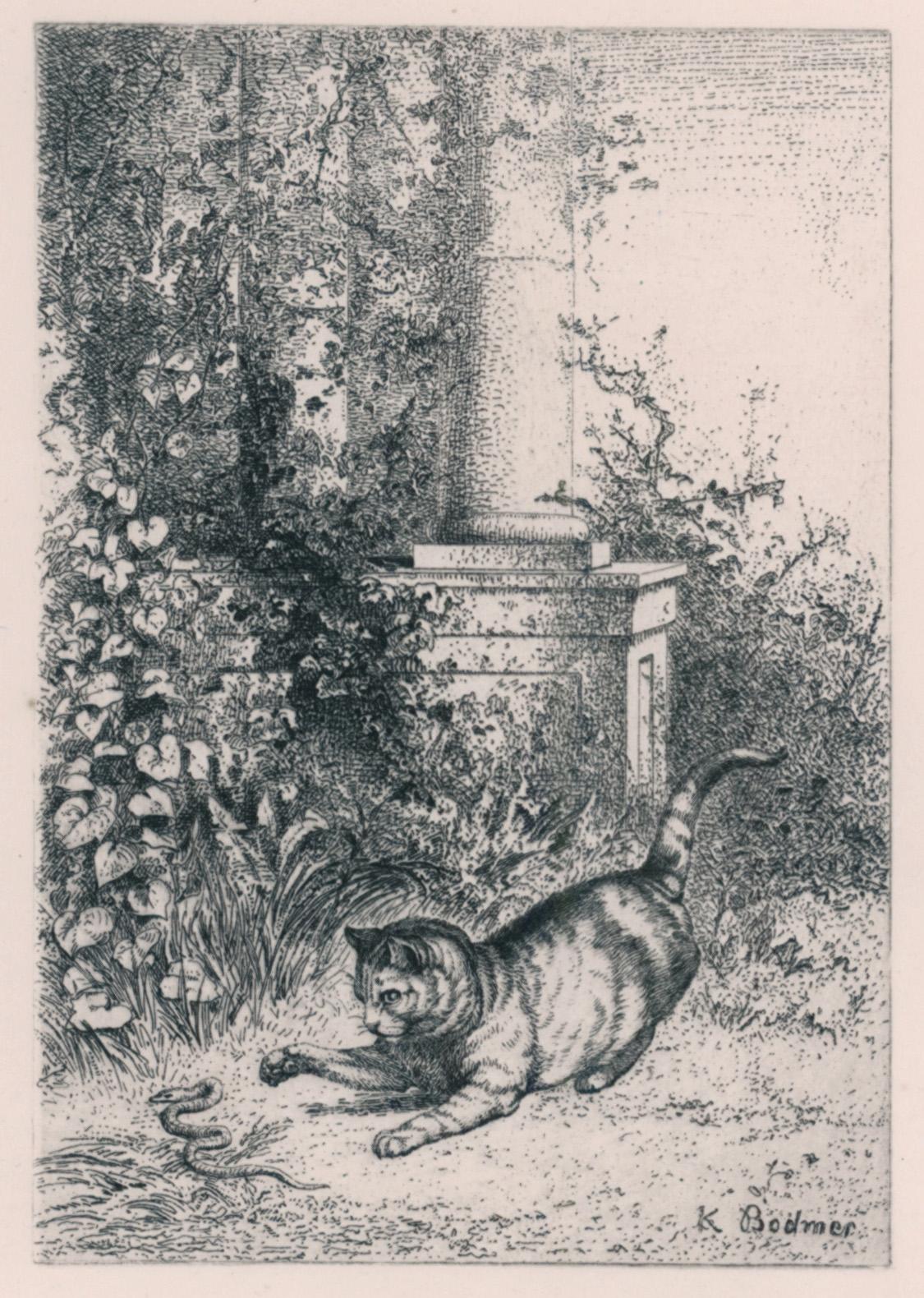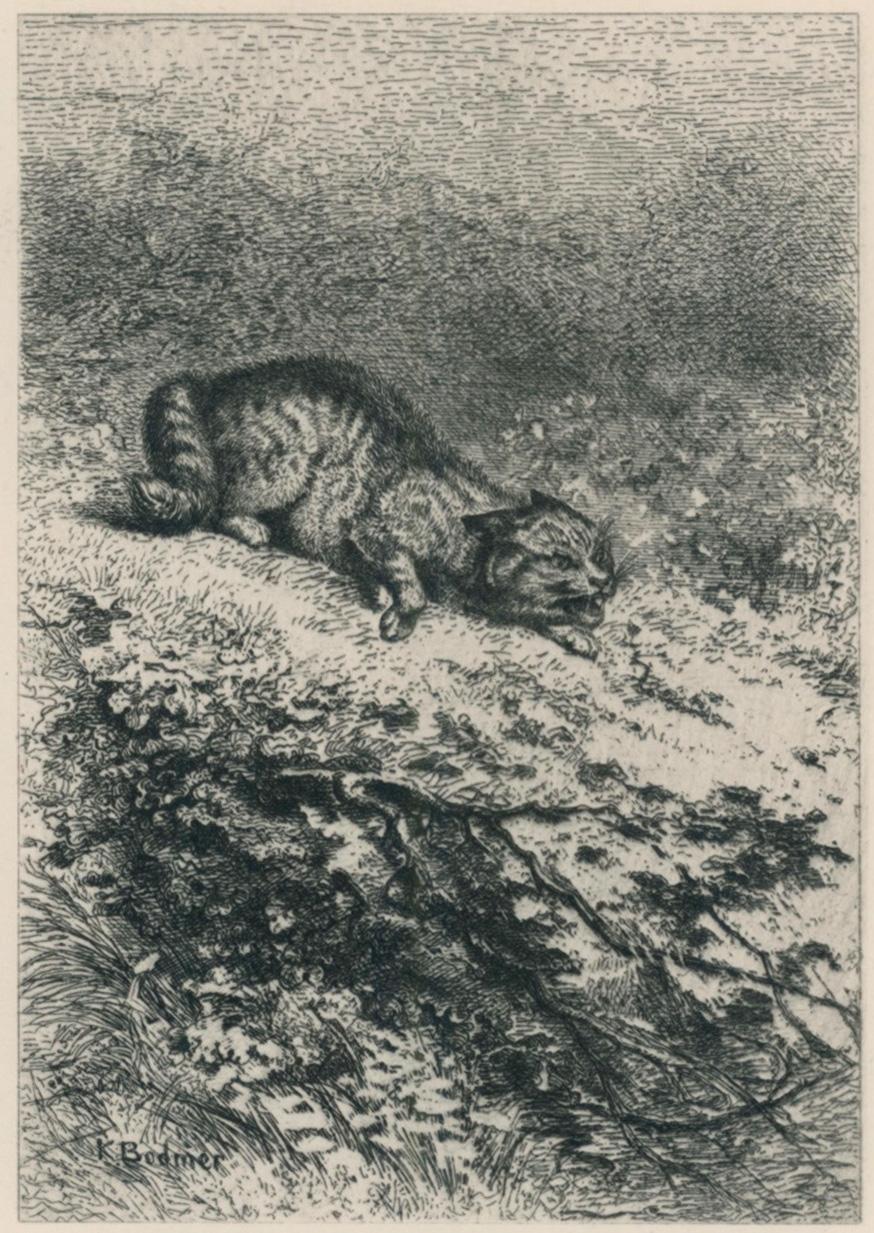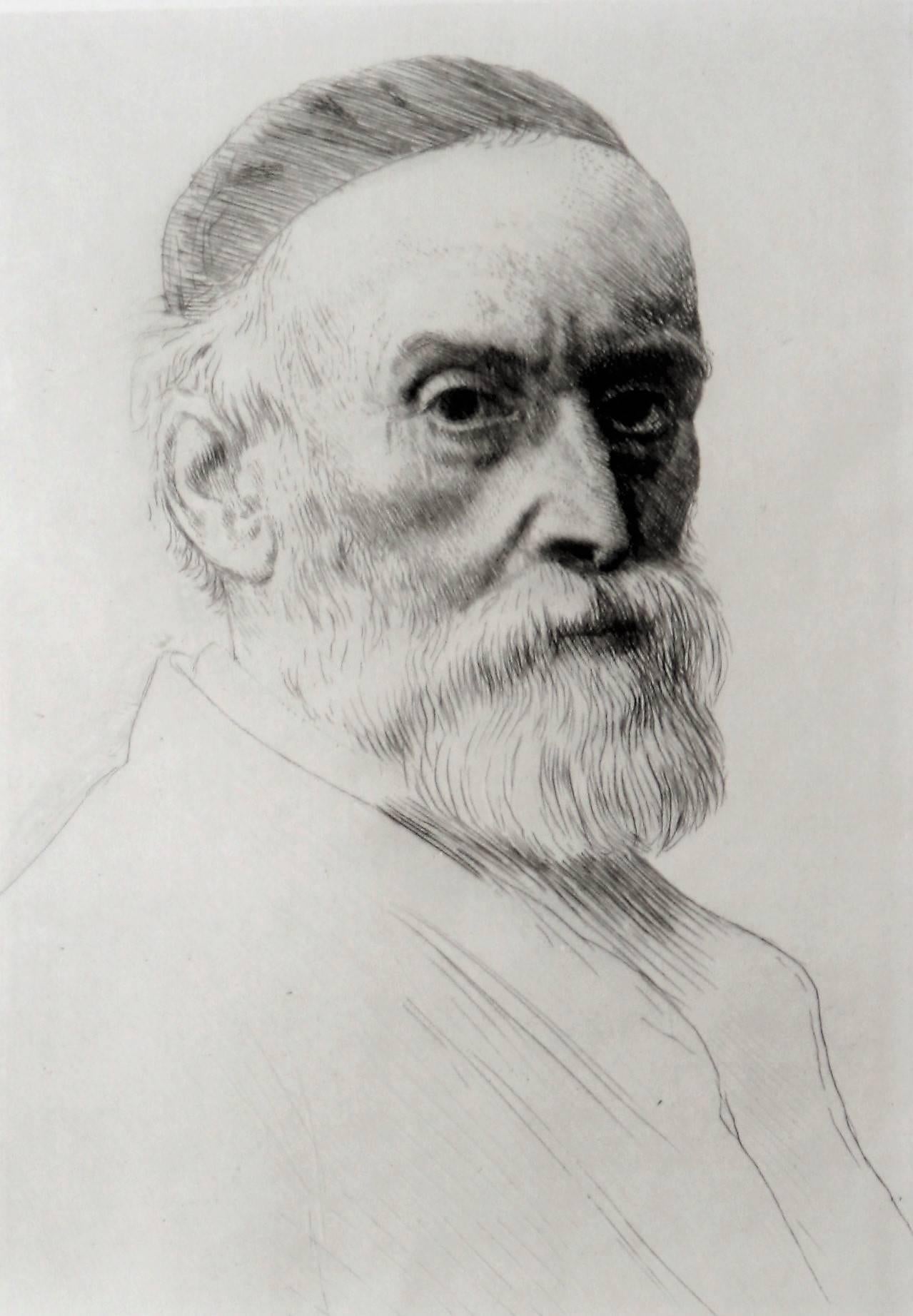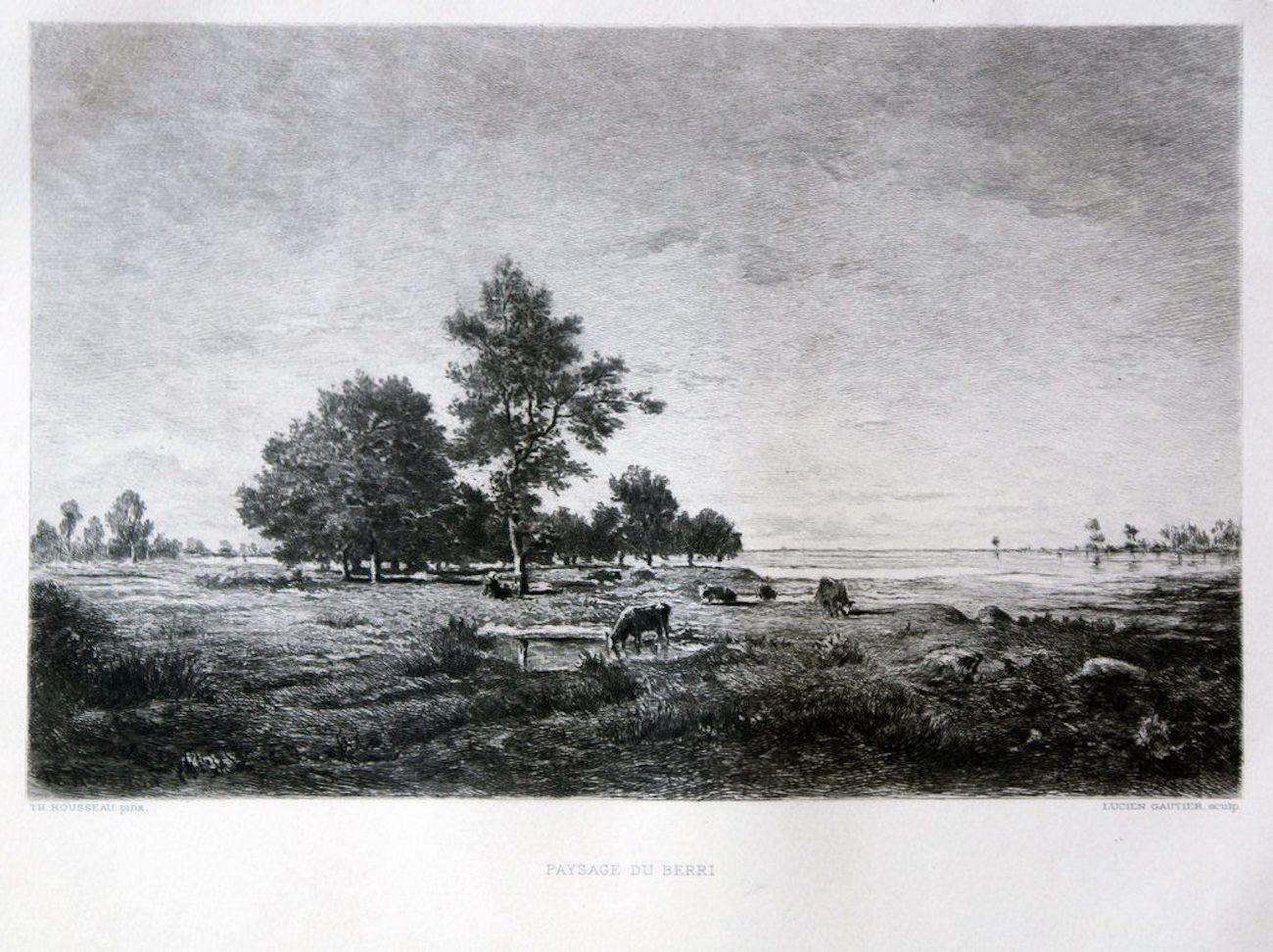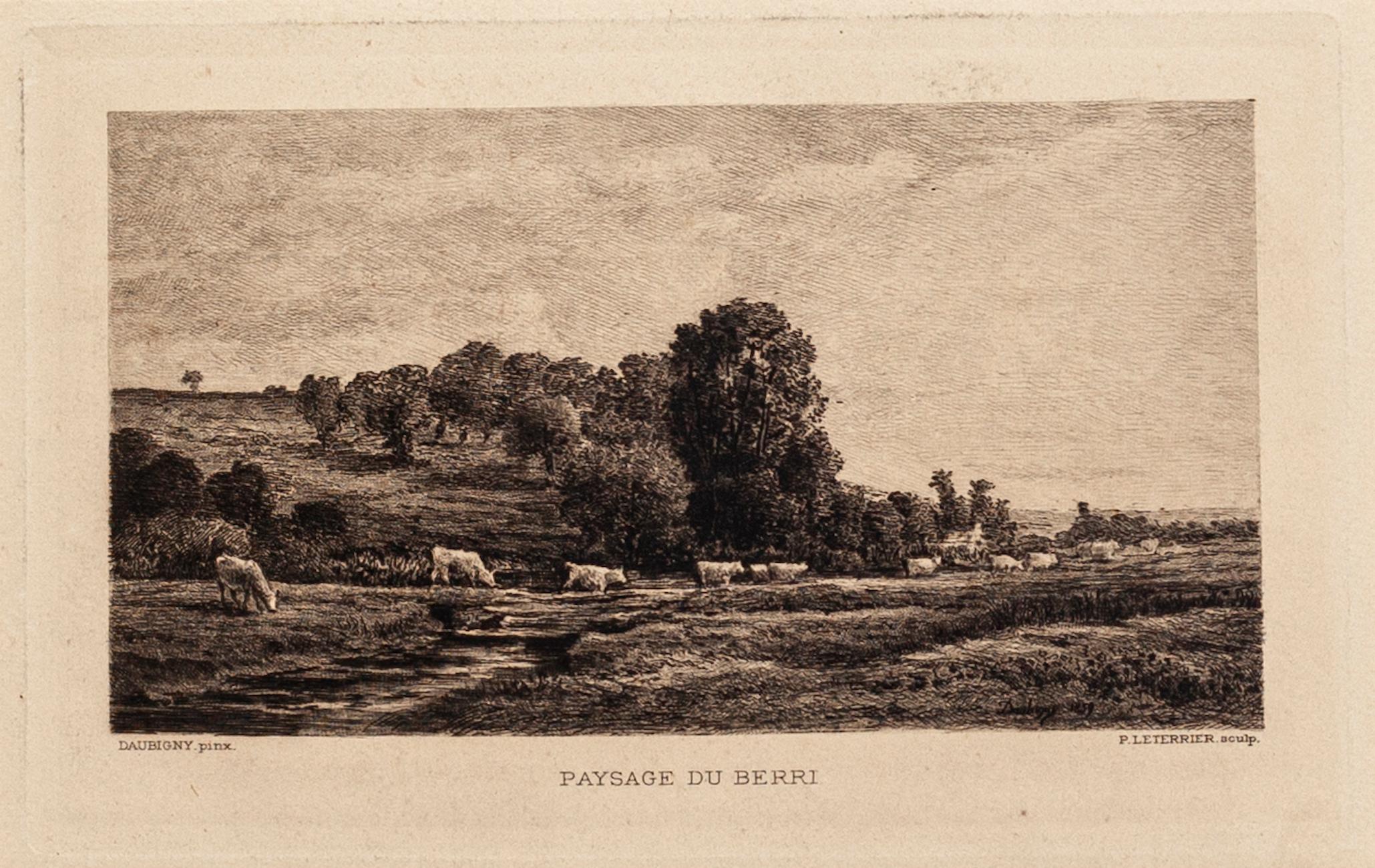Items Similar to Connais-tu le Pays (Primavera) apres J. Rolshoven (Do you Know the Country)
Want more images or videos?
Request additional images or videos from the seller
1 of 11
Theophile Narcisse ChauvelConnais-tu le Pays (Primavera) apres J. Rolshoven (Do you Know the Country)1889
1889
About the Item
Connais-tu le Pays (Primavera) apres J. Rolshoven
(Do you Know the Country -Spring)
Etching, 1889
Signed "Julius Rolshoven" in pencil lower left; signed "N. Chauvel" in pencil lower right
Publisher: Librairie de l'Art, Paris
This etching goes through 10 states according to Delteil. This is a deluxe impression printed on vellum with a remarque of a flower in the margin near the pencil signature of Chauvel.
After a work by Julius Rolshoven (American, 1858-1930), this piece is signed in pencil by both artists
Image/Plate size 17 3/8 x 12 1/2 inches
Condition: Excellent condition
Hinge residue top edge verso
Provenance: Edmund Sagot, Paris
By decent
References: Delteil 126, prior to state vii/X, a proof with flower remarque in the bottom margin
IFF 91
Painter, etcher and lithographer, born in Paris, pupil of Picot, Bellel, Aligby, attended the Ecole des Beaux-Arts in 1854, and exhibited at the Salon from 1858 to 1904. Legion of Honour in 1896. (British Museum)
A pupil of François-Édouard Picot and Jean-Joseph Bellel, Théophile Chauvel entered the Imperial School of Fine Arts on March 4, 1854. In the same year he won second prize in Rome for historical landscape. His first entry to the Salon dates from 1855. He painted and exhibited until 1859. At that time, he devoted himself to dry point, a type of lithography and etching, from 1861 to 1867, representing, among other things, views of the forest of Fontainebleau , then reproductions of works by the masters of the Barbizon school.
From 1874-1875, he worked for the annual album L'Eau forte and the magazine L'Art , which he became director of in the 1890s and in which were reproduced his prints after Théodore Rousseau , Jules Dupré , Narcissus Díaz de la Peña or Charles-François Daubigny. But it is in his engravings of interpretation of Corot that he asserts all his mastery.
Chauvel was a medalist at the Salon in 1870, 1873 and 1878. He won the medal of honor at the Salon des Artistes Français, the first awarded to the engraving section, in 1881. He was awarded the grand prix of the Salon in 1889 and 1900. He was appointed Knight of the Legion of Honor in 1879, then promoted to Officer of the same order in 1896. (1st Dibs)
- Creator:Theophile Narcisse Chauvel (1831 - 1909, French)
- Creation Year:1889
- Dimensions:Height: 17.375 in (44.14 cm)Width: 12.5 in (31.75 cm)
- Medium:
- Movement & Style:
- Period:
- Condition:
- Gallery Location:Fairlawn, OH
- Reference Number:
About the Seller
5.0
Recognized Seller
These prestigious sellers are industry leaders and represent the highest echelon for item quality and design.
Platinum Seller
These expertly vetted sellers are 1stDibs' most experienced sellers and are rated highest by our customers.
Established in 1978
1stDibs seller since 2013
711 sales on 1stDibs
Typical response time: 1 hour
Associations
International Fine Print Dealers Association
- ShippingRetrieving quote...Ships From: Fairlawn, OH
- Return PolicyA return for this item may be initiated within 10 days of delivery.
More From This SellerView All
- L'Aieule (The Grandmother)By Louis LegrandLocated in Fairlawn, OHL'Aieule (The Grandmother) Etching and aquatint printed in colors, 1904 Signed with the red stamp of the publisher, Gustave Pellet, Lugt 1193 and numbered (see photo) Edition: 100 (81/100) Reference: Arwas 202 iv/IV IFF 98 Condition: Excellent, the sheet aged as usual Image size: 14 1/4 x 18 5/8" Sheet size: 16 15/16 x 24 1/4" Louis Auguste Mathieu Legrand (29 September 1863 – 1951) was a French artist, known especially for his aquatint engravings, which were sometimes erotic. He was awarded the Légion d'honneur for his work in 1906. Life Legrand was born in the city of Dijon in the east of France. He worked as a bank clerk before deciding to study art part-time at Dijon's Ecole des Beaux-Arts. He won the Devosge prize at the school in 1883.[2] In 1884 Legrand studied engraving under the Belgian printmaker Félicien Rops. Legrand's artworks include etchings, graphic art and paintings. His paintings featured Parisian social life. Many were of prostitutes, dancers and bar scenes, which featured a sense of eroticism. According to the Hope Gallery, "Louis Legrand is simply one of France's finest early twentieth century masters of etching." His black and white etchings especially provide a sense of decadence; they have been compared to those of Henri de Toulouse-Lautrec, though his drawings of the Moulin Rouge, the can-can dance and the young women of Montmartre preceded Toulouse-Lautrec's paintings of similar scenes. He made over three hundred prints of the night life of Paris. They demonstrate "his remarkable powers of observation and are executed with great skill, delicacy, and an ironic sense of humor that pervades them all." Two of his satirical artworks caused him to be tried for obscenity. The first, "Prostitution" was a symbolic drawing which depicted a naked girl being grasped by a dark monster which had the face of an old woman and claws on its hands; the second, "Naturalism", showed the French novelist Émile Zola minutely studying the thighs of a woman with a magnifying glass. Defended by his friend the lawyer Eugène Rodrigues-Henriques (1853–1928), he was found not guilty in the lower court, but was convicted in the appeal court and then given a short prison sentence for refusing to pay his fine. Legrand was made famous by his colour illustrations for Gil Blas magazine's coverage of the can-can, with text by Rodrigues (who wrote under the pseudonym Erastene Ramiro). It was a tremendous success, with the exceptional quantity of 60,000 copies of the magazine being printed and instantly sold out in 1891. In 1892, at the instigation of the publishing house Dentu, Legrand made a set of etchings of his Gil Blas illustrations. The etchings were published in a book, Le Cours de Danse Fin de Siecle (The End of the Century Dance Classes). Legrand took a holiday in Brittany, which inspired him to engrave a set of fourteen lithographs of simple country life called Au Cap de la Chevre (On Goat Promontory). It was published by Gustave Pellet who became a close friend of Legrand's. Pellet eventually published a total of 300 etchings by Legrand, who was his first artist; he also published Toulouse-Lautrec and Félicien Rops among others. He did not only work in graphics; he exhibited paintings at the Paris salon of the Société Nationale des Beaux-Arts starting in 1902. In 1906 he was made a chevalier of the Légion d'honneur. Legrand died in obscurity in 1951. A retrospective exhibition was held at the Félicien Rops museum in Namur, Belgium in 2006 to celebrate his graphic art. The art collector Victor Arwas published a catalogue raisonné for the occasion. Books illustrated de Maupassant, Guy: Cinq Contes Parisiens, 1905. Poe, Edgar Alan: Quinze Histoires d'Edgar Poe...Category
Early 1900s Art Nouveau Figurative Prints
MaterialsAquatint
- Danseuses s'habillant (Laurence adjusting her hair and Mignon adjusting clothesBy Louis LegrandLocated in Fairlawn, OHDanseuses s'habillant (Laurence adjusting her hair and Mignon adjusting hre clothes) Drypoint & aquatint, 1893 Signed in the plate (see photo) After the division of the plate into A. 81 (as here) and A. 82 Divant la glace Editon 100 printed on velin paper Issued by Pellet in the set, Les Petites du Ballet, Gustave Pellet editeur, 1893 (13 plates), second state (b) without remarque Reference: Arwas 81, top portion of the plate vii/VIII Plate/Image size: 6 x 8 7/16 inches Condition: excellent Louis Auguste Mathieu Legrand (29 September 1863 – 1951) was a French artist, known especially for his aquatint engravings, which were sometimes erotic. He was awarded the Légion d'honneur for his work in 1906. Life Legrand was born in the city of Dijon in the east of France. He worked as a bank clerk before deciding to study art part-time at Dijon's Ecole des Beaux-Arts. He won the Devosge prize at the school in 1883.[2] In 1884 Legrand studied engraving under the Belgian printmaker Félicien Rops. Legrand's artworks include etchings, graphic art and paintings. His paintings featured Parisian social life. Many were of prostitutes, dancers and bar scenes, which featured a sense of eroticism. According to the Hope Gallery, "Louis Legrand is simply one of France's finest early twentieth century masters of etching." His black and white etchings especially provide a sense of decadence; they have been compared to those of Henri de Toulouse-Lautrec, though his drawings of the Moulin Rouge, the can-can dance and the young women of Montmartre preceded Toulouse-Lautrec's paintings of similar scenes. He made over three hundred prints of the night life of Paris. They demonstrate "his remarkable powers of observation and are executed with great skill, delicacy, and an ironic sense of humor that pervades them all." Two of his satirical artworks caused him to be tried for obscenity. The first, "Prostitution" was a symbolic drawing which depicted a naked girl being grasped by a dark monster which had the face of an old woman and claws on its hands; the second, "Naturalism", showed the French novelist Émile Zola minutely studying the thighs of a woman with a magnifying glass. Defended by his friend the lawyer Eugène Rodrigues-Henriques (1853–1928), he was found not guilty in the lower court, but was convicted in the appeal court and then given a short prison sentence for refusing to pay his fine. Legrand was made famous by his colour illustrations for Gil Blas magazine's coverage of the can-can, with text by Rodrigues (who wrote under the pseudonym Erastene Ramiro). It was a tremendous success, with the exceptional quantity of 60,000 copies of the magazine being printed and instantly sold out in 1891. In 1892, at the instigation of the publishing house Dentu, Legrand made a set of etchings of his Gil Blas illustrations. The etchings were published in a book, Le Cours de Danse Fin de Siecle (The End of the Century Dance Classes). Legrand took a holiday in Brittany, which inspired him to engrave a set of fourteen lithographs of simple country life called Au Cap de la Chevre...Category
1890s Art Nouveau Figurative Prints
MaterialsAquatint
- Boys SleddingBy John SloanLocated in Fairlawn, OHBoys Sledding Etching, 1920 Signed and titled in pencil by the artist below image (see photos) Annotated in pencil by the artist "100 proofs" Signed and dated in the plate lower left...Category
1920s Ashcan School Prints and Multiples
MaterialsEtching
- Figure Study (From Interior: Evening)By Stone RobertsLocated in Fairlawn, OHSigned and numbered by the artist Edition: 25 Printed on Hahnemuhle paper Published by Neptune Fine Arts Condition: excellent Plate/Image size: Sheet size: "Stone Roberts’ luminou...Category
20th Century American Realist Figurative Prints
MaterialsEtching
- BacchanalBy Giovanni Andrea PodestàLocated in Fairlawn, OHInscribed in the square left: "Magnificentis/simo Principi/Paolo lorda/no. II Bracci/ani Duci/Aud. P.DDD/1640 Inscribed on right: Rome apud Franciscsum Saluucium Plate: 10 3/8 x 15...Category
18th Century and Earlier Old Masters Figurative Prints
MaterialsEtching
- SevillanasLocated in Fairlawn, OHSevillanas Etching and color aquatint on laid watermarked paper, c. 1900 Signed by the artist in pencil lower right (see photo) Editioned in pencil lower left corner of sheet Publish...Category
Early 1900s Post-Impressionist Figurative Prints
MaterialsAquatint
You May Also Like
- A Domestic Cat Playing with a Garter Snake, from Eaux-Fortes Animaux & PaysagesBy Karl BodmerLocated in Middletown, NYEtching on cream laid paper, 6 1/8 x 4 3/4 inches (156 x 120 mm), full margins. In good condition with some minor, uniform age tone. Printed by George Bertauts, Paris. [Beraldi II.140.26] Henri Béraldi Les graveurs du XIXe siècle: Guide de l'amateur d'estampes modernes. Librairie L. Conquet, vol. XII, Paris, 1885–1892, cat. no. 34, p. 140. __________ Well known in his native Germany as a watercolorist, Karl Bodmer had a rich experience exploring in North America in the 19th century, accompanying German explorer Prince Maximilian zu Wied-Neuwied as the official artist on an expedition which toured the Missouri River...Category
Mid-19th Century Barbizon School Animal Prints
MaterialsLaid Paper, Etching
- The Wild Cat (Chat Sauvage)By Karl BodmerLocated in Middletown, NYEtching on cream laid paper, full margins. From Eaux-Fortes Animaux & Paysages. [Beraldi II.140.34] Henri Béraldi Les graveurs du XIXe siècle: Guide de l'amateur d'estampes modernes. Librairie L. Conquet, vol. XII, Paris, 1885–1892, cat. no. 34, p. 140. __________ Well known in his native Germany as a watercolorist, Karl Bodmer had a rich experience exploring in North America in the 19th century, accompanying German explorer Prince Maximilian zu Wied-Neuwied as the official artist on an expedition which toured the Missouri River...Category
Mid-19th Century Barbizon School Animal Prints
MaterialsLaid Paper, Etching
- Portrait of George Frederick WattsBy Alphonse LegrosLocated in Storrs, CTPortrait of George Frederick Watts (1817-1904. 1879. Etching. Beraldi catalog 19 state .iii/iv; Wright catalog 198, Bliss catalog 198. 7 1/8 x 5 1/4 (sheet 11 7/8 x 8). As published...Category
Late 19th Century Barbizon School Portrait Prints
MaterialsEtching
- Paysage du Berri - Etching and Aquatint After Théodore Rousseau - Late 1800By Lucien GautierLocated in Roma, ITOriginal print by Lucien Gautier after the original painting by T. Rousseau. Etching and aquatint. Perfect conditions. Collect the magician landscapes by the French Barbizon school artists! Lucien Marcellin Gautier (Aix-en-Provence 1850 - 1925) The French engraver was firstly pupil of Gibert and Marius Reinaud in Aix-en-Provence, then Léon Gaucherel...Category
Late 19th Century Barbizon School Figurative Prints
MaterialsEtching, Aquatint
- Paturage. Clair de lune - Etching by Constant Troyon - 19th CenturyBy Constant TroyonLocated in Roma, ITPaturage. Clair de lune is a beautiful etching realized by Constant Troyon in 19th century. In Good condition. Worn paper and some stains on the back. on the lower margin the title ...Category
19th Century Barbizon School Figurative Prints
MaterialsEtching
- Paysage du Berri - Etching by Charles-François Daubigny - 19th CenturyLocated in Roma, ITPaysage du Berri is an original black and white etching on paper, realized by Charles-François Daubigny. At the bottom left margin the printed inscription: "DAUBIGNY" pinx; bottom c...Category
19th Century Barbizon School Figurative Prints
MaterialsEtching
Recently Viewed
View AllMore Ways To Browse
French Cubist Large
Modern Fruit Print
St John The Divine
Raoul Dufy Sketch
Judy Boyes
Matisse Nadia
Porcelain Mural
1930s Womens Hats
Maison Porcelain Antique
30s Womens Hats
Antique Tahiti Print
Antique Long Conference Table
Three Dimensional Wall Sculpt
Jean Perret Geneve
Etching 1980s
Jean Bernard Prints
Church Marriage
Martha Manns
